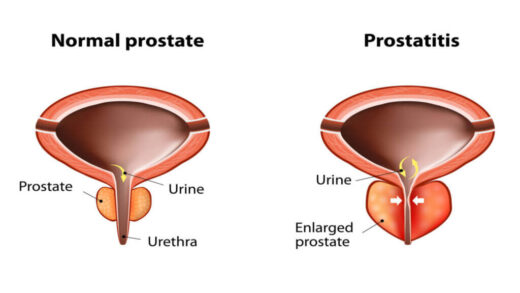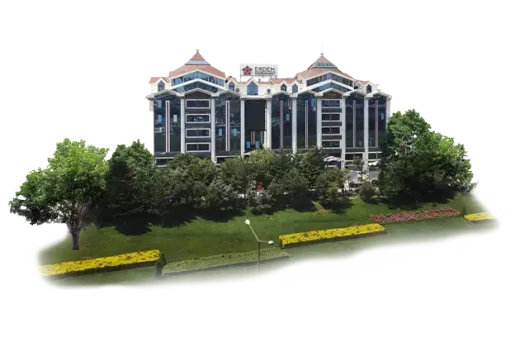A diagnosis of prostate cancer can shake the foundation of a man’s life interrupting routines, stirring fear, and raising difficult questions about the future. It’s a moment when time slows down, yet decisions must be made swiftly. Among the treatment options available, prostatectomy the surgical removal of the prostate gland stands as one of the most decisive interventions.
But what does it really mean to choose prostatectomy? What are the risks, the benefits, the realities of life after surgery? More importantly, how can this procedure reshape not only your health outcomes but your entire outlook on life?
This article aims to go beyond the technical definitions and provide a real-world, grounded look at how prostatectomy can change your future and why facing prostate cancer head-on might be the most empowering step you’ll ever take.

Why Some Men Choose Surgery
Every man’s prostate cancer journey is different. Some cases grow slowly and may never require intervention. Others are aggressive and demand a proactive approach. For men diagnosed with localized or locally advanced prostate cancer, radical prostatectomy is often one of the most effective curative options.
Surgery may be recommended if:
- You’re relatively young and in good general health.
- Your cancer is confined to the prostate or has only slightly spread.
- You want to remove the tumor entirely rather than monitor or irradiate it.
- You value the peace of mind that comes with physically eliminating the cancer.
It’s not just a medical choice, it’s a life choice. For many, choosing prostatectomy is about taking control of the situation instead of living in fear of progression.
What Exactly Is a Prostatectomy?
A radical prostatectomy is a surgical procedure that removes the entire prostate gland along with some surrounding tissues, including the seminal vesicles. In some cases, nearby lymph nodes are also removed for further examination.
There are several techniques used to perform this surgery:
- Open Prostatectomy: A traditional approach using a single large incision in the lower abdomen.
- Laparoscopic Prostatectomy: A minimally invasive method involving small incisions and camera-guided instruments.
- Robotic-Assisted Prostatectomy: A highly precise variation of laparoscopic surgery using robotic arms controlled by a skilled surgeon.
Each method has its own recovery profile, but all share the same goal: to remove the cancer, reduce the risk of recurrence, and give men a second chance at life.
The Long-Term Benefits
While no cancer treatment is without side effects, prostatectomy offers several long-term benefits, especially when performed in early stages:
1. Cancer Elimination
The most direct benefit is the removal of the tumor. For many men, prostatectomy represents the best shot at total cancer eradication, especially when margins are clear and lymph nodes are uninvolved.
2. Peace of Mind
Knowing the prostateand thus the primary site of cancerhas been removed can significantly reduce anxiety. Regular PSA tests after surgery help monitor for recurrence, but many men enjoy years or decades of remission.
3. Improved Survival Rates
Studies have shown that radical prostatectomy can extend survival for men with intermediate to high-risk prostate cancer, especially when compared with watchful waiting or delayed treatment.
4. A New Relationship with Health
Many men come out of prostate cancer surgery with a renewed appreciation for their bodies, their families, and their priorities. It’s not just about adding years to life, it’s about adding life to those years.
Side Effects and Recovery
Facing prostate cancer head-on also means confronting the potential side effects of surgery. It’s important to be informed, not frightened because many of these challenges are temporary or manageable with the right support.
Urinary Incontinence
It’s common to experience urine leakage in the weeks or months following surgery. Pelvic floor exercises, time, and in some cases medications or further procedures can restore control.
Erectile Dysfunction
Nerve damage during prostate removal may affect erections. However, nerve-sparing techniques have improved significantly, and many men recover function with time, medication (like PDE5 inhibitors), or devices.
Emotional and Mental Impact
Surgery affects more than just the bodyit touches relationships, self-image, and mental well-being. Anxiety, depression, or changes in intimacy are not uncommon. But acknowledging these feelings is the first step toward healing, and professional support can make all the difference.
The Recovery Timeline
Prostatectomy recovery varies depending on the surgical technique and individual health, but here’s what a typical journey might look like:
- Hospital Stay: Most men stay 1–2 nights after robotic surgery, 3–4 after open surgery.
- Catheterization: A urinary catheter is usually kept in for 1–2 weeks.
- Initial Recovery: Fatigue, mild pain, and difficulty with bowel movements are common but usually fade within a few weeks.
- Return to Daily Life: Many men return to office work within 2–4 weeks, and resume normal activities within 6–8 weeks.
- Sexual Function and Continence: These may take 6–12 months to return to baseline, sometimes longer.
Full recovery isn’t just about the clock it’s about support, self-care, and patience.
Choosing the Right Surgical Team
If you’re considering prostatectomy, choosing the right surgeon and hospital can have a major impact on your outcomes. Experience matters. So does trust.
Look for:
- A board-certified urologist with extensive experience in prostate cancer surgery.
- A hospital with modern surgical technologies and a dedicated urology unit.
- Transparent discussions about risks, success rates, and recovery expectations.
- A support system including nurses, coordinators, and rehabilitation therapists.
At Erdem Hospital in Istanbul, patients are treated by leading urologists like Prof. Dr. Necmettin Atsü, who specializes in both open prostatectomy and minimally invasive techniques like HoLEP. With comprehensive pre-op counseling and post-op support, international patients are guided through every step of the process from arrival to recovery.
Is Surgery Always the Right Choice?
Not necessarily. Active surveillance, radiation therapy, or focal therapies like HIFU (High-Intensity Focused Ultrasound) might be suitable alternatives for certain cases. That’s why shared decision-making with your medical team is critical.
Ask yourself:
- How aggressive is my cancer?
- What are my life expectancy and general health like?
- What risks am I willing to accept?
- What will give me the most peace of mind?
There’s no one-size-fits-all answer but the decision is yours to make, with guidance.
Real Stories, Real Strength
Across the world, thousands of men have faced prostate cancer and come out stronger. Whether it’s the grandfather who now plays football with his grandchildren, or the executive who runs marathons post-surgery, prostatectomy doesn’t end your story it redefines it.
Facing the disease head-on is not a sign of weakness. It’s courage. It’s commitment. It’s choosing life.
Don’t Wait to Take Control

A prostate cancer diagnosis is daunting but it’s also an invitation to reclaim your future. Prostatectomy may not be the easiest path, but for many men, it’s the one that leads to the clearest chance at healing and the strongest foundation for a long, healthy life.
If you or someone you love is considering prostatectomy, start by asking the right questions, finding the right team, and giving yourself permission to hope.
At Erdem Hospital, you’re not just a case file, you’re a person, with a story worth protecting and a future worth fighting for.